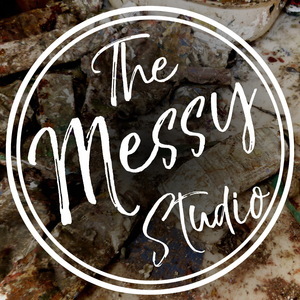Influence Vs Copying
Episode 101 · December 7th, 2019 · 39 mins 4 secs
About this Episode
No artist is wholly original. We all owe those who came before us for techniques, ideas, theories, and approaches, and we should honor these influences. Each of us references these influences in our own way. Some of us place ourselves firmly in the tradition of a certain approach to art, or even as followers of a particular artist, but adding our own expression and interpretation. Others are less eager to fit into a category, choosing not to identify with any particular approach and acknowledging a wide range of influences. But overall, being influenced by others is an expected part of how we grow and educate ourselves, and there is a long tradition of this process throughout art history.
The best influences are those in which you understand the other artist's work and the context in which it was created. This allows you to move beyond the look or style of the work to finding connections with your own ideas. It is also healthy to have numerous influences, so tghat you are not overly swayed by one person. In these ways, you can pull from the work of others the things that will help your own work grow in a personal direction.
Unfortunately, there are also artists who use influence in an unhealthy way, either deliberately plagiarizing another artist’s work, or using so many of their ideas that it comes uncomfortably close to outright copying. This is a distressing situation for the artist being copied. If the plagiarism is serious enough that action is called for, finding a way forward can be very challenging.
Try to remember that, although having your work copied hurts, it will probably end up hurting the person copying your work more than you. There are very few things more damaging to an artist than gaining a reputation as someone who produces knock offs. Customers, gallaries, and other artists all view this behavior as unprofessional. For these reasons we should all seek to create unique art, and not become overly influenced by other artists. If you art looks too much like someone else’s it will end up hurting you in the long run.
The bottom line is that you cannot control what other people do but you can control your response. Try to remain objective when handling these issues, whichever side you find yourself on. Embrace the centuries long tradition in the arts of being influenced by others and building on the work of the past. Always strive to differentiate your work from others, and if someone else’s work is too similar, do your best to handle the situation gently.
www.messystudiopodcast.com
www.rebeccacrowell.com
www.squeegeepress.com
www.facebook.com/messystudiopodcast
